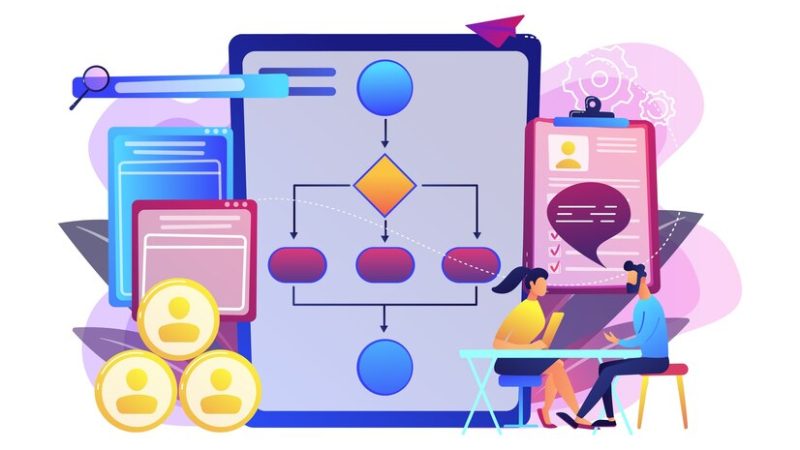A business VoIP system is an advanced telephone communication platform that allows a company to connect over the internet instead of the traditional Public Switched Telephone Network (PSTN). While the technology offers many benefits, companies also want to ensure they’re able to seamlessly integrate their communications solution with other essential tools. Integrated business VoIP systems provide enhanced collaboration, streamlined customer interactions and improved productivity across the entire organization.
A VoIP phone system provides better flexibility, service, scalability and security than traditional phone systems. Rather than requiring a private branch exchange (PBX) for every office location, VoIP calls are made over the internet via SIP trunks. This allows companies to easily scale their phone system as they grow without having to worry about long service call or technician visits. This is especially beneficial for businesses with multiple locations or remote employees.
VoIP solutions can be integrated with a variety of digital business tools including CRMs and help desks, giving them the power to automate and streamline business processes that rely on telephone communication. This means that customers and agents are able to work more efficiently and quickly across the organization, increasing customer satisfaction and conversion rates.
Depending on the specific needs of an organization, the best VoIP providers for business will offer features that are tailored to these types of communication needs. This is because the software and hardware that is used in a VoIP phone system are specifically designed to meet the requirements of these business processes. Some of these key features include:
For example, a CRM integration with a VoIP phone system can provide the ability to record and take notes during a call. This feature is incredibly useful for sales teams as it allows them to keep track of conversations with potential or current clients. This information can then be entered into a CRM automatically, which simplifies the process and saves time for busy agents.
This type of integration can also enable businesses to utilize other functionalities such as click-to-text buttons next to contacts within the CRM. This feature allows agents to quickly send a quick message or link to a contact, which can be useful during a sales conversation. Furthermore, some VoIP solutions also provide SMS automation, allowing businesses to automatically send out SMS messages to contacts based on certain criteria being met.
Once a business has identified the features they need from a VoIP phone system, it’s important to make a list of all reputable providers that offer these services. From there, they should compare the prices and call plans of each provider by tier to determine which one can best meet their communication needs while staying within their budget. Then, they can move on to consider other factors such as reputation and the availability of add-ons. After narrowing down their options, they can choose the best business VoIP provider for their organization.
Voice over Internet Protocol (VoIP) has become a staple in modern business communication, offering cost-effective and feature-rich calling solutions. To maximize the benefits of VoIP, it’s essential to integrate it with other business tools and software. Here’s how to seamlessly connect VoIP with your existing business ecosystem:
CRM Integration: Customer Relationship Management (CRM) systems are central to many businesses. Integrating VoIP with your CRM allows for automatic call logging, caller identification, and access to customer information during calls. This empowers your team to provide more personalized and efficient service.
Email Platforms: Connect your VoIP system to your email platform to enable voicemail-to-email transcription. This feature automatically transcribes voicemail messages and sends them to your email, making it easy to prioritize and respond to messages promptly.
Instant Messaging and Collaboration Tools: Integrate VoIP with instant messaging and collaboration tools like Slack or Microsoft Teams. This integration allows for easy switching between messaging and calling, making team communication more efficient.
Call Analytics and Reporting: By linking VoIP with analytics tools, you can gain insights into call performance, call volumes, and call durations. These insights can inform decision-making and help you enhance your customer service.
Calendar Apps: Syncing VoIP with your calendar applications ensures that you can schedule calls and conferences more efficiently. It also prevents scheduling conflicts and helps manage your team’s availability.
File Sharing and Document Management: Integrate VoIP with file-sharing and document management systems to facilitate the exchange of files during calls. This is particularly useful for businesses that need to collaborate on documents or presentations in real-time.
Help Desk Software: For businesses with customer support teams, connecting VoIP with help desk software streamlines customer interactions. Agents can access customer information, track call histories, and create support tickets directly from the VoIP system.
Marketing Automation: VoIP integration with marketing automation tools helps track the source of incoming calls and measure the effectiveness of marketing campaigns. This data can inform your marketing strategies.
Mobile Applications: Ensure that your VoIP system seamlessly integrates with mobile applications. This allows team members to make and receive VoIP calls from their mobile devices, keeping them connected even when they are on the go.
Video Conferencing Solutions: If your business relies on video conferencing, make sure your VoIP system integrates with popular video conferencing platforms. This simplifies the process of scheduling and joining video meetings.
Security and Authentication Systems: VoIP integration with security and authentication systems enhances call security. This is particularly important for businesses that handle sensitive information.
Analytics and AI: Incorporating analytics and AI tools can provide real-time insights during calls. AI-powered voice assistants can transcribe calls, extract keywords, and offer suggestions or prompts for better customer interactions.
Third-Party Plugins: Many VoIP providers offer third-party plugin support, allowing businesses to customize and extend their VoIP system’s functionality according to their specific needs.








